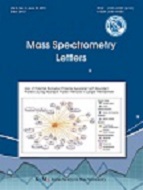
- P-ISSN 2233-4203
- E-ISSN 2093-8950

Post-translational modifications (PTMs) of proteins regulate self-renewal and differentiation in embryonic stem cells (ESCs). Nitration of tyrosine residues of proteins in ESCs modulates their downstream pathways, which can affect self-renewal and differentiation. However, protein tyrosine nitration (PTN) in ESCs has been rarely studied. We reviewed 23 nitrated sites in stem cell proteins. Functional enrichment analysis showed that these nitrated proteins are involved in signal transduction, cell adhesion and migration, and cell proliferation in ESCs. Comparison between the nitrated and known phosphorylated sites revealed that 7 nitrated sites had overlapping phosphorylated sites, indicating functional links of PTNs to their associated signaling pathways in ESCs. Therefore, nitrated proteome provides a basis for understanding potential roles of PTN in self-renewal and differentiation of ESCs.
Souza, J. M.. (2008). . Free Radical Bio. Med, 45, 357-.
Radi, R.. (2004). . P. Natl. A. Sci. USA, 101, 4003-.
Jung Rok Lee. (2009). Role of Protein Tyrosine Nitration in Neurodegenerative Diseases and Atherosclerosis. Archives of Pharmacal Research, 32(8), 1109-1118.
Turko, I. V.. (2002). . Pharmacol. Rev, 54, 619-.
Abello, N.. (2009). . J. Proteome Res, 8, 3222-.
Csibi, A.. (2010). . PloS one, 5, e10070-.
Knyushko, T. V.. (2005). . Biochemistry, 44, 13071-.
Xu, S.. (2006). . Am. J. Physiol-Heart C, 290, H2220-.
Venkatesan, A.. (2011). . Mol. Brain, 4, 28-.
Ischiropoulos, H.. (2003). . Biochem. Bioph. Res. Co, 305, 776-.
Tyther, R.. (2007). . Proteomics, 7, 4555-.
Bloch, W.. (1999). . Cardiovasc. Res, 4, 675-.
여운석. (2008). Nitrosative protein tyrosine modifications: biochemistry andfunctional significance. BMB reports, 41(3), 194-203.
Tejedo, J. R.. (2010). . Cel. Death Dis, 1, e80-.
Zhan, X.. (2009). . Method. Mol. Cell. Biol, 566, 137-.
Kim, S. J.. (2008). . Cell. Res, 18, 686-.
Franze, T.. (2004). . The Analyst, 12, 589-.
Brill, L. M.. (2009). . Cell Stem Cell, 5, 204-.
Kim, J. K.. (2011). . Anal. Chem, 83, 157-.
Rayala, S. K.. (2007). . P. Natl. Acad. Sci. USA, 104, 19470-.
Lee, J. R.. (2009). . Anal. Chem, 81, 6620-.
Zhang, Q.. (2007). . J. Proteome Res, 6, 2257-.
Nikov, G.. (2003). . Anal. Biochem, 320, 214-.
Brittain, S. M.. (2005). . Nat. Biotechnol, 2, 463-.
Go, E. P.. (2007). . J. Proteome Res, 6, 1492-.
Van Hoof, D.. (2009). Phosphorylation dynamics during early differentiation of human embryonic stem cells. Cell stem cell, 5, 214-.
Monteiro, H. P.. (2002). . Free Radical Bio. Med, 33, 765-.
Huang da, W.. (2009). . Nat. Protoc, 4, 44-.
Hornbeck, P. V.. (2004). . Proteomics, 4, 1551-.
Gnad, F.. (2011). . Nucleic Acids Res, 39, D253-.
Dinkel, H.. (2011). . Nucleic Acids Res, 39, D261-.
Harb, N.. (2008). . PloS one, 3, e3001-.
Bolstad, B. M.. (2003). . Bioinformatics, 19, 185-.